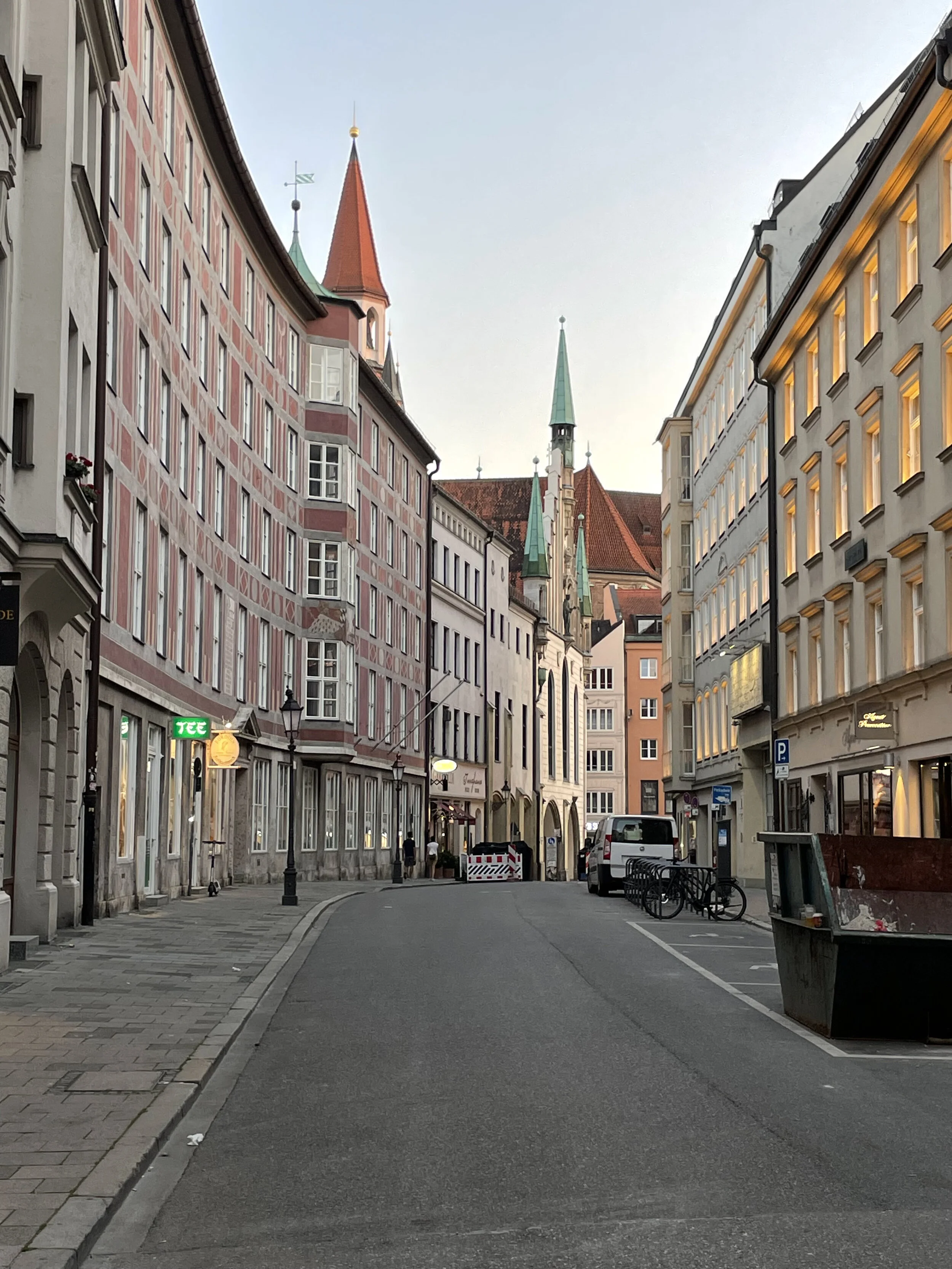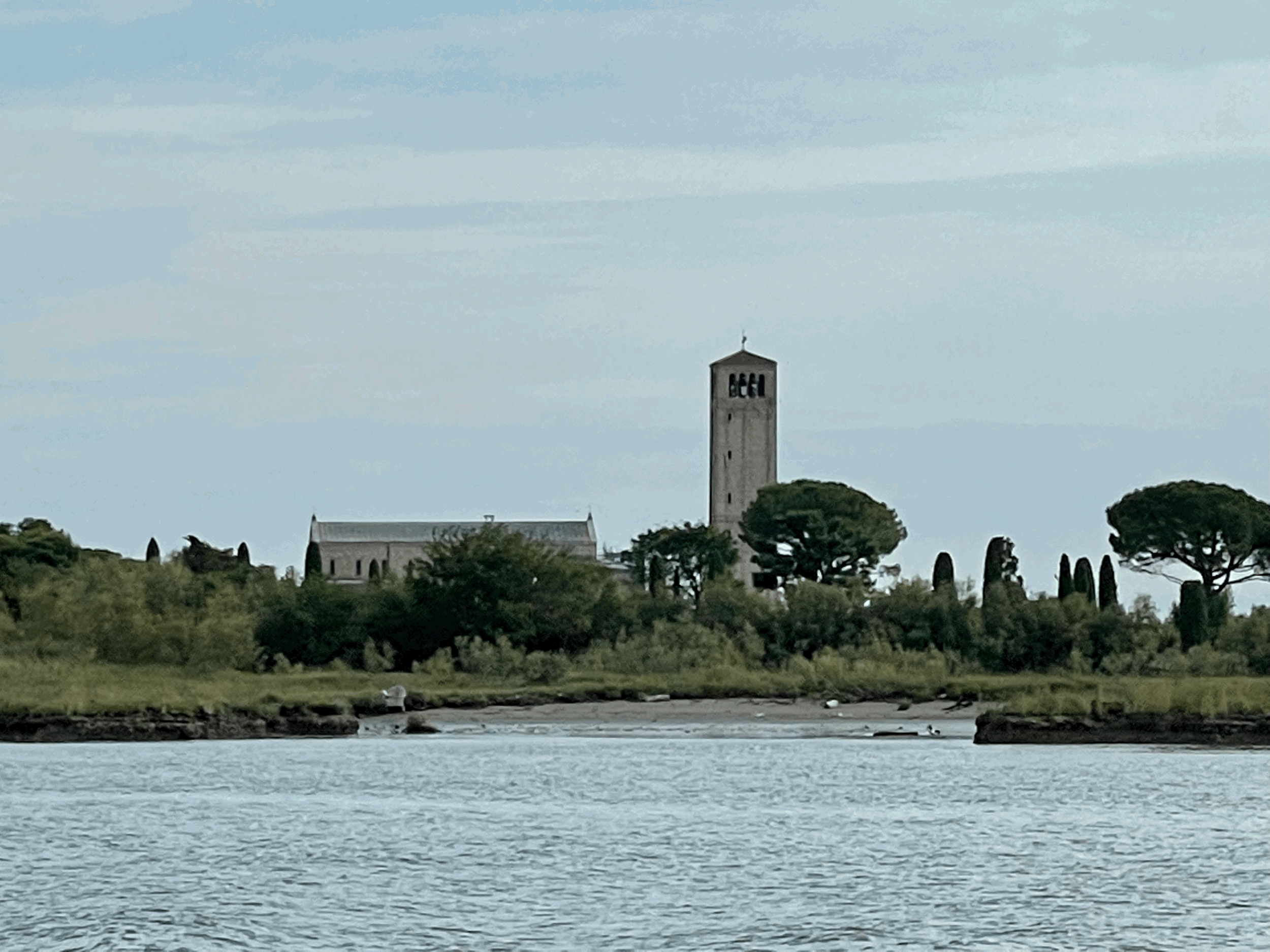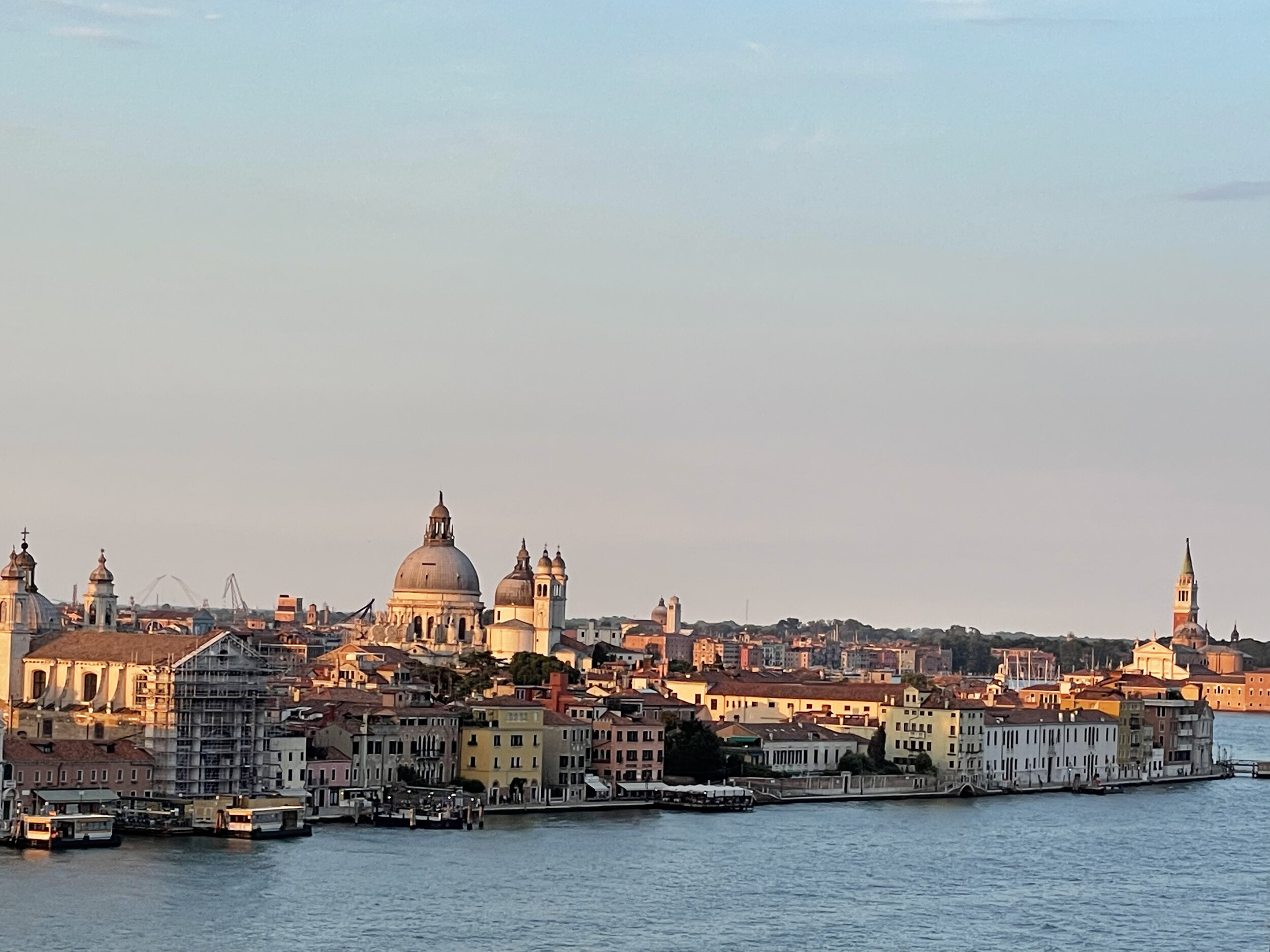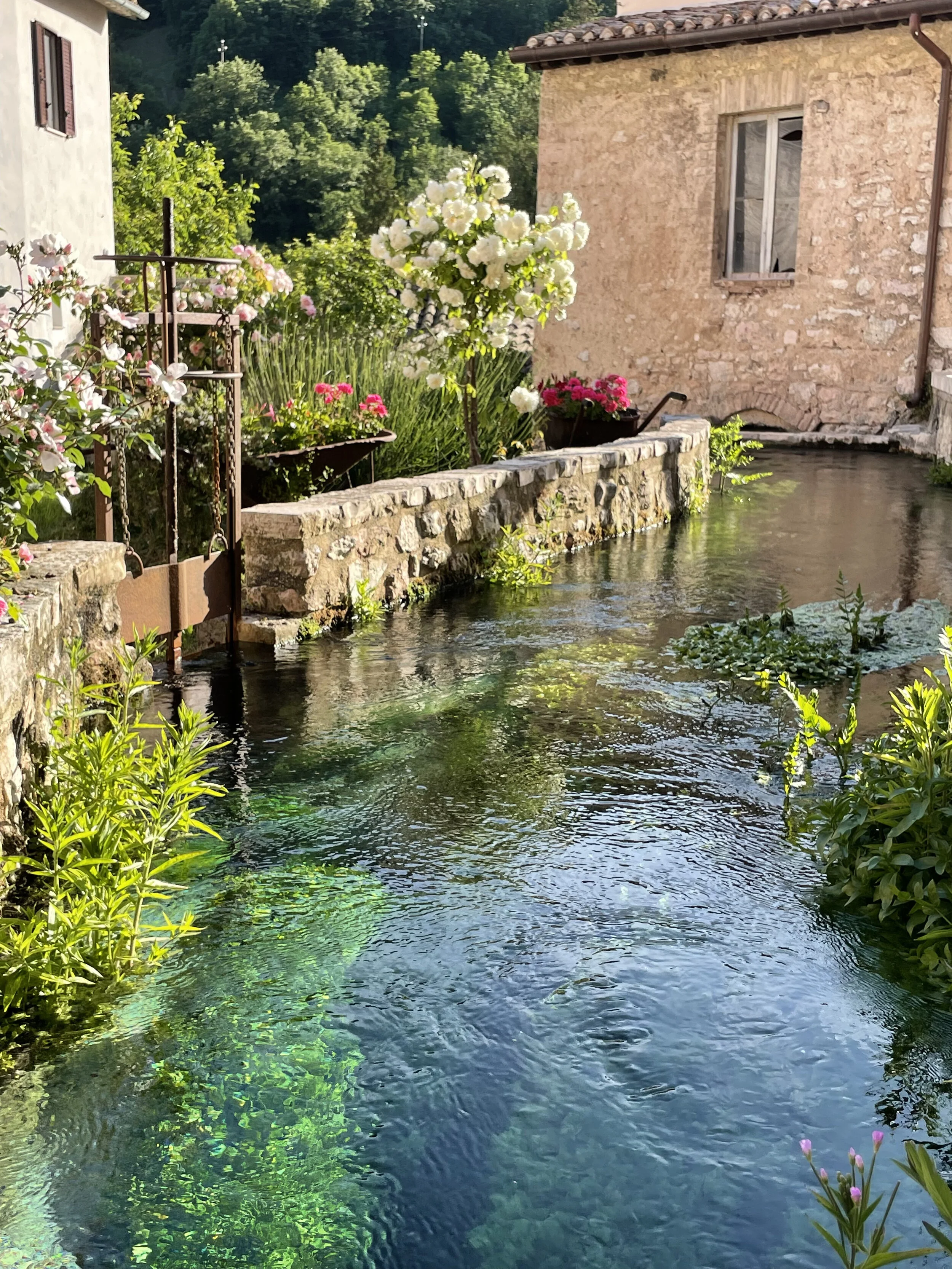Munich , August 10 2021
A short and investigative visit to Munich
Marianplatz
The second world war is often described as the “world in flames”. There are various ways to theorize why it started. The weight and pain of Versailles, the Prussian military culture, the powerful evil genius of Hitler, the racial philosophies that spread from the late 19th century? Maybe all the above, I don’t know, but one thing seems certain to me, and that is where it started. The ignition source for the wildfire that consumed most the world and killed 50 million people; it was Munich.
Does this look familiar? Google Hitler’s water color artwork
Sticking with the wildfire analogy, at its origin it takes a combination of combustable materials, rich air, and a hot spark. Lost on me before was how that dangerous mix was piled high in the shear chaos of Germany after the First World War. In particular in Bavaria, an autonomous nation as late as 1871, it was in 1919 just 48 years after the German unification and struggling with its existence. Many wanted it to again become a separate German nation, as Austria was, many wanted an independent socialist state resembling the Soviet model, others wanted the monarchy restored. Everyone was willing to fight for what they wanted and nearly everyone opposed Berlin. People were poor, hungry, humiliated, and starving for a change. They lost thousands of sons in the fields to the West and felt betrayed by Berlin, who they largely felt had just quit the fight and left them to be raped by their conquerors.
View toward the Konigsplatz, once a major Nazi parade ground, now in happier times.
There were many political parties in Munich in 1919, like the hilarious “what have the Romans ever done for us” Monty Python scene in Life of Brian where the revolutionaries become confused about the party names. It probably wasn’t too hard to get one started. If you had some ideas, a mimeograph machine and a good speaking voice you were good to go. There was no money in it, you were likely to get your ass kicked, and almost as likely to get shot dead. But hey, at least you might feel better trying to make a change, and many were compelled to do just that.
Enter a young man from Austria trying to find himself, a friendless, lost and worthless soul. A failed artist, a street rat. He was however in possession of a lethal mix of courage, intelligence and speaking ability that might have served well if he’d just been born in a different time and place. Maybe starting a smart phone company or marketing an electric car. There was something else of course, his sense of destiny and almost religious faith in his own psychotic (no better word) ideas. His vision was worth any cost to himself and he was driven in a messianic frenzy to realize it.
Pinakothek art museum, notice the center section destroyed by bombing and rebuilt shortly after the war.
Back to the fire. I’ve been to Munich several times, and love the city. It is so civilized, clean, safe and welcoming. The architecture, the museums, the restaurants, and of course the best beer in the world at least to my taste. This visit I tried to get to the next layer and get to know more of the city from a historical perspective. I had read about the Beer Hall Putsch, and I wanted to know more about where this all started. As Mary Poppins said its best to begin at the beginning. So I re-read some books on my phone here and there, as we toured and walked more than few kilometers around town.
Just behind the Hilton where the Burgerbräukeller once stood, this plaque shows the site where Georg Elser’s bomb, placed next to pillar, came within 13 minutes of taking out Hitler during the 1939 putsch anniversary celebration.
The side wall of the porch at Feldherrnhalle where the putsch march failed in gunfire. A shot killed the man marching arm in arm with Hitler; so close.
Along the way we walked the path of the putsch’s march from the now Hilton hotel to its bloody conclusion at the Feldherrnhalle. Pausing on the way for a coffee before the Isar bridge I read about an old beer hall. This is the Hofbräukeller. Now this little restaurant and beer garden is not to be confused with the Hofbräuhaus. The latter being worth an obligatory visit the first time to Munich and not much else. Both are owned by the same company, they have the same beer, the same food (might be better at the keller) and a very different atmosphere.
The Hofbräukeller interior, everyone was eating outside as you’d expect
The beer garden at Hofbräukeller
The Hofbräukeller is free of the tourist mass, you get served promptly, and you don’t need to have a reservation, or share a table if you prefer not too. I liked it. We went there because I stumbled on a little tidbit of historical fact that many probably know but was new to me. This was where on October 16, 1919, Adolph Hitler tested himself and made his first speech. There were 111 people there. Clearly, this is the spot where the arson investigator finds the fire source. It was here that Hitler realized by his own account, as I read later, that he could command an audience. In fact one co-leader of the tiny new party quit over him being chosen to make a presentation there, as he felt Hitler was incapable of making a good speech. The no good Austrian had in a few hours in front of a small group of Bavarians, galvanized his belief in himself. He knew at that moment he finally found himself a job, and there was unfortunately for the world no turning back. At this little quaint restaurant we find the blackened gas can and lighter. Just 26 years later the little orator left Munich in nearly complete destruction and much of the world beyond it. To get a good idea of what became of Munich after that October day, visit the Munich Documentation Center. Opened in 2001 on the scorched site of the Nazi party headquarters, this is one of the best historical museums I’ve ever visited. It takes you through the birth of the movement in Munich all the way to its end and the beginning of the city’s recovery after the American occupation. All in English, no guide or audio needed. Films, photos, interviews, it gives you chills.
Munich Documentation center on the right and former Fuhrerbräu building on left
Almost every Nazi building has been destroyed either by bombing or an effort to erase the guilty past. Few remain such as the Fuhrerbräu, where the Munich agreement was signed sealing the Czech’s fate.
A display at the Documentation Center. Note the image of the same wall I took a photo of further above. Passers by were required to give the salute.
Documentation Center
On a lighter note, here are a few quick recommendations if you visit Munich.
1) Favorite beerhall and garden is Augustiner Keller, but make a reservation
2) Best German food we’ve had is Der Pschorr just south of Marianplatz
3) Best cocktail bar for me is Gabanyi, neighborhood but upscale and serious mixology talent.
- finally just my 2 cents, skip Octoberfest, it’s spring break in lederhosen.
Seated at the bar Gabanyi and waiting for my Manhattan
Sibillini Park , August 5 2021
Un escursione in montagna
Halfway between the Italian Alps and the toe of Calabria, in the very middle of the country, lie the Sibillini Mountains. Tourists driving down the autostrada are surprised to see snow capped mountains so far south, and most just drive on past rushing to visit one of Italy’s top sights. Only an hour drive from the Adriatic shore, the Sibillini and the Grand Sasso range further south are visible from a large part of the eastern coast.
View to the Adriatic, Monte Conero is on the horizon just above the peak on the left
When I first arrived in Italy, I never thought too much about these peaks either, that is until my mountain loving friend Gaga took me there for a hike. I’ve been enthralled with their beauty ever since. Last week was my first trek to Monte Sibilla. It’s the namesake for the range, and sits in the middle of the park. The mountains are cloaked in legends and named after the ancient oracles or Sibyls. One of whom they say lived deep below Monte Sibilla, only accessible through a cave for those who dared to seek counsel. Other peaks and lakes have their own legends but we’ll leave that for another day.
My sure footed friend Gaga
We set out mid morning and packing a lunch and water supply began our hike to the summit. The weather was beautiful, and refreshingly cool compared to the sweltering heat on the coast. Beautiful, except for the wind, which grew stronger and stronger as we gained altitude. I will confess now to my fear of heights, and staggering on the rocks while fighting the wind certainly added to the damn fear factor.
There aren’t many people on these trails and sometimes you can spend a day climbing and only come across a half dozen other enthusiasts. We did encounter a few flocks of sheep along the way and met their Shepard, a fellow from Gambia. He was making a living as best he could, enduring the weather, the solitude and the wild. He told us how he and his dogs met up with some wolves a few months back, no doubt looking for a good place to eat.
From the refuge where we started the climb to the summit was a 700 meter altitude gain and took about an hour. All in all not too hard as these Sibillini climbs go, but the narrow rocky trail up is steep, and quite close to some sharp drops. The very top of the summit is like a crown with a steep rocky ring that requires you to pull yourself up on chains anchored in the rock.
Approaching the summit and it’s rocky crown
Making my way up the rock face using the chains provided
The reward for all this, other than the dopamine rush of reaching a named summit, is a view that is just spectacular. In fact every step of the way you are treated to breathtaking panoramas.
View from the top
Looking down the north side to the canyon named Gola dell’Infernaccio (Hell’s Gorge)
Trying not to blow over the side
Looking back from the far side of the summit
After winding our way down we headed to the small village of Foce in the valley below. Most of these old small towns in the park have brutal scars from the earthquakes of five years ago. The recovery is slow, some buildings sit half collapsed as they were the day it happened, others fenced off or reinforced. The fifteen room BnB and restaurant we chose for ‘una merenda’ is named Taverna della Montagna, and had somehow survived intact as far as we could see.
Water break after the summit. The village in the valley below is Foce
The earthquakes have continuously challenged the people of Italy for millenniums, shaped the landscape and transformed cities and towns. But this fact of Italian life does little to sooth the pain caused by the 2016-17 quakes which were particularly sad, so many people lost their lives and so many quant beautiful towns damaged. Towns that I had the good fortune to see before the shock, and now left so wounded you wonder if they can ever be brought back.
The glacial valley that leads to Lago di Pilato
At the rifugio we had some cheese and salumi and contemplated our next journey, a three hour hike from that point up the U shaped glacial valley to the high alpine lakes called Lago di Pilato. These little lakes are magical, pristine and sheltered by their position. Only someone who loves their beauty enough to endure the climb goes there, and those who do all share the greatest respect for the environment where they’re found. I’ve made the trek from the southern side several times but this would be a new approach that I can’t wait to do, and to write about.
Torcello, July 16 2021
Exploring the Lagoon
The first Venice
People either love Venice or they hate it. In fact it’s been that way for the over 1,000 years of its existence, not just as a city but as a nation. Yet when you catch it on a warm sunny day, when the tourist level is low, maybe in the shoulder season; I defy anyone to be anything but enchanted. We were lucky to visit on a summer day where the pandemic restrictions culled down the hordes of visitors. No cruise ships, no groups following an umbrella, and but a few lucky Americans.
Venice on the quite side
Even before the city of Venice took shape as we know it, the nation of Venice existed for centuries. Slowly evolving over 1300 years from what was essentially a Roman refugee camp, into the empire that would last until Napoleon conquered it in 1797 without a shot. He was one of those who didn’t much care for Venice.
The shore of Torcello
Being a bit obsessed with the unique history of this country, I wanted on this trip to see where it all started, and so we grabbed a morning vaporetto and set out north into the lagoon to visit Torcello.
The way to the church, looking back at the Torcello boat dock
The ride is about 30 minutes and takes you past cemetery island, Murano, Burano and some very small islands that appear to have their own history based on their ruins. Only four of us got off the boat at Torcello and walked up the path to the cathedral. The area is well maintained, nicely paved in brick and surrounded by marsh grass and low fields. Here you have a glimpse of what the Rialto, the island that Venice is perched on today, looked like when folks first got there.
Getting around the islands the old way
When the refugees from the nearby mainland Roman towns were looking for safety, they came here first. Settling on the islands nearer to the shore, it was a place barely hospitable and difficult to reach. Perfect for avoiding barbarian soldiers who sought to plunder, rape, take slaves and just kill people wholesale, and probably in that order. However, following the Romans here was just not worth their effort, besides you needed boats and Attila didn’t exactly have a Navy. By the time Torcello became a bustling city, a smaller version of what Venice looks like today, the people of the lagoon had already begun to coalesce with a shared raison d’etre. They were first led by the Church and then by a long line of Doges. A nation emerged fueled by commerce, salt production and ample fishing, and oh by the way with a Navy, which was once one of the most powerful in the Mediterranean.
Bridge on the path to the Church
Santa Maria Assunta Torcello
The Bell Tower of Santa Maria Assunta
In 810 AD, after fighting off King Pepin and Franks, Doge Agnello decided that they needed a bigger moat, so to speak. He led them to the island that now is the city of Venice and they moved everything from Torcello, including building materials to develop the new center. As a result there is nothing left in Torcello, except some recovered archeological artifacts and it’s great church, Santa Maria Assunta. I guess you don’t just pick up and move cathedrals. The giant church with an imposing tower was first built in 640 AD and then like so many other ancient Italian churches was repaired and expanded over the years. You can see the oldest part in the baptistery and where it expanded to newer sections in the main building. Newer like from the 1300’s. We couldn’t get inside as it’s being restored at present, but plan to try again when the work is complete and maybe spend a night there. The island has some nice looking B&B options and several trattorias too choose from.
Ponte di Diavolo Torcello
Garden with early artifacts near Santa Maria Assunta
Some of the few pieces of old Torcello left behind
We spent the balance of our stay back in Venice, walking the back streets, looking for dinner options and hoping to discover a nice spot for a cocktail. We had some success, and I would recommend Hosteria da Franz for dinner, the Hilton rooftop bar for an aperitivo and a small place with great drinks and music called the Bra’s Cocktail Bar near Saint Marks for a late night cocktail
View from the Hilton roof bar toward the Grand Canal
Looking West down the Giudecca Canal
Rasiglia Umbria, June 16 2021
A day trip into Umbria
A day trip into Umbria
After a visit to Spello and a great lunch at Il Pinturicchio (a small inexpensive trattoria we stumbled into with great truffle carbonara, homemade pasta, and fantastic oven baked lamb) we headed for Rasiglia. This is a small town that dates from the 13th century. It likely sprang up where it did due to being situated near the ancient Via della Spina and accessible to fast flowing mountain streams. The Via della Spina was a key Roman highway that helped connect the Adriatic coast to Rome. As time went on and the road fell out of use, the town developed into a small industrial center that harnessed the force of the streams to power mills and textile machines. The remains of the mills and the complex stream controls with gates and stone channels is still in place. As you walk through its pristine and uncrowded streets you can hear the constant rush of the water, and feel a cool breeze that seems to run with the streams.
A textile mill
This is truly a very peaceful place, a jewel well removed from the guide books. The town is small, well kept, and has a park like feel. The residents seem to hope you’ll visit but aren’t trying to market it to tourists. You leave your car at the base of the town and with a short stroll immediately find yourself surrounded by beautiful old stone buildings, bridges, and everywhere; more flowers. Old photos decorate the town and give a great sense of the work that once supported it. There aren’t many amenities, a restaurant above town looks inviting, but was closed during our visit.
The old village wash basin feeding into a stream
Leaving Rasiglia we headed to a couple of nearby wineries in the Montefalco area, where the prized Montefalco Sangrantino wine can only be found. After some tasting at the wineries, we stocked up and headed for home.
Over the Pond and Through the Pandemic
I might have been one of the last Americans to leave Italy last year, and I might be one of the first to get back this year. After a long 14 months of enduring the restrictions, we’re back at our Italian home.
I might have been one of the last Americans to leave Italy last year, and I might be one of the first to get back this year.
After a long 14 months of enduring the restrictions, we’re back at our Italian home. Getting here involved filling out an online form called a dPLF (only required by Italy) which basically provides tracing information on where I’ve been to the Italian health authorities and has me declare my compliance to the quarentine. There was also a rapid covid antigen test at O’hare a few hours before departure. The form and the test were not difficult, only a little annoying when you consider how the government's red tape has holes all over it. The connection in Munich was pretty easy and perhaps faster even than before. Arriving at Rome was, well, a non event. No passport or covid checks, just walk through baggage claim and get your car.
Waiting on results
We now must do the good faith (as promised) ten day quarantine at our home here. Our friends are assisting with grocery shopping and essentials. Italy has improved dramatically over the past month and new cases are even below the US and approaching the UK levels. We therefore expect that shortly after our quarantine expires (and we pass our followup rapid test) we’ll be able to tour Italy freely. Albeit with a mask handy. We can’t wait to get back to the restaurants and to visit some of the now not so crowded sites we’d previously avoided in our travels like Cinque Terra and Capri. Travel between EU nations however, is still a work in progress. There is supposed to be a proof of vaccine “green card” issued but it’s not clear how they will tie our CDC vaccination cards into that system. I have reason to believe they will, just too much tourist money involved and nobody’s going to get vaccinated all over again.

















































